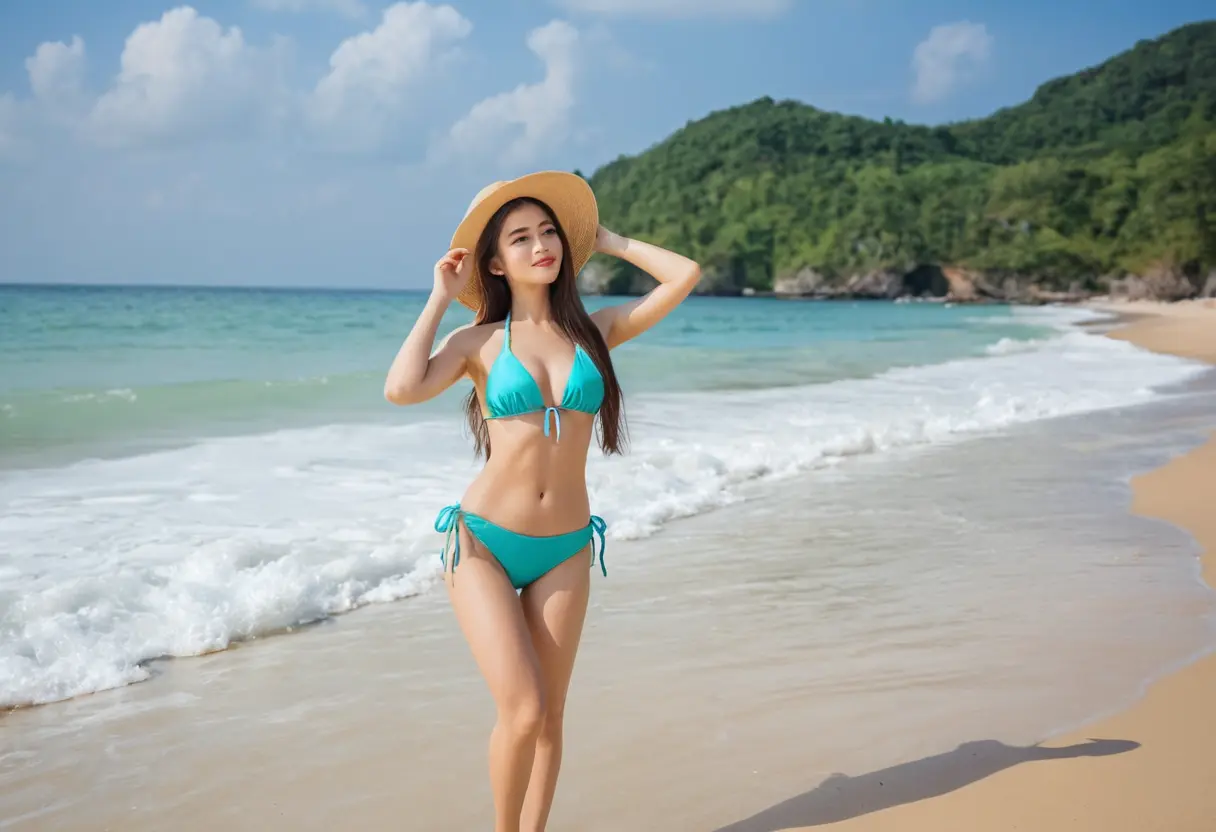The Impact of AI in Fashion and Nude Art Interpretation
The rise of artificial intelligence (AI) has profoundly impacted various industries, and two fields that have seen significant changes are fashion and nude art interpretation. From design automation to enhancing artistic expression, AI technologies are transforming how these areas evolve, creating new opportunities for creativity, personalization, and interaction. This article delves into the key ways AI is reshaping both the fashion industry and the interpretation of nude art, highlighting its influence, applications, and future possibilities.
AI in Fashion: Redefining Design and Personalization
Artificial intelligence has started to revolutionize the fashion industry by providing powerful tools for designers, brands, and consumers. AI applications in fashion can be seen in several crucial areas, such as design creation, trend forecasting, personalized recommendations, and virtual fitting rooms.

- Design Automation: AI enables designers to generate new patterns, colors, and styles automatically. Tools like AI-driven design software can analyze vast amounts of historical fashion data to predict which styles will be in demand, reducing the time spent on creative processes.
- Trend Forecasting: AI can predict fashion trends by analyzing social media, runway shows, and consumer behavior patterns. Machine learning algorithms identify emerging patterns, allowing fashion brands to stay ahead of the curve and adjust their collections accordingly.
- Personalized Shopping Experiences: Online retailers use AI to recommend clothing based on a customer’s browsing history and preferences. These AI-powered algorithms help brands tailor their product offerings to meet individual needs, leading to a more personalized shopping experience.
- Virtual Fitting Rooms: Virtual fitting rooms powered by AI allow customers to try on clothes in a digital environment. Using augmented reality (AR) and machine learning, these tools enable consumers to see how clothes would fit their body types without physically trying them on.
AI's ability to streamline fashion processes and improve customer experiences is reshaping the future of fashion design, making it more efficient and accessible to both designers and consumers.

AI in Nude Art Interpretation: Enhancing Artistic Expression
In the realm of nude art, AI is playing a transformative role in how art is interpreted, analyzed, and even created. Traditional methods of art analysis involved human critics and subjective interpretation, but AI technologies are bringing a new layer of objectivity and innovative possibilities to the field of art.

- Art Analysis and Interpretation: AI algorithms can be trained to analyze nude art pieces by identifying visual elements such as posture, form, and symmetry. These tools can offer detailed insights into an artist's technique and the emotional impact of their work. For example, AI can help researchers understand how different artists have represented the human body across centuries, enabling deeper academic studies.
- AI-Generated Art: Beyond analysis, AI has also begun to generate nude art itself. Using generative adversarial networks (GANs), AI can create new works of art that mimic the styles of famous artists or explore new concepts in the representation of the human body. This has led to a fusion of human creativity and machine-generated aesthetics, pushing the boundaries of artistic expression.
- Restoration and Preservation: AI technologies have been applied to restore damaged works of nude art. Machine learning models can reconstruct missing portions of artworks, offering a chance to preserve valuable pieces for future generations. This process requires advanced algorithms that understand the nuances of artistic techniques and can fill in the gaps without compromising the original style.
- Art Criticism and Public Reception: AI-driven sentiment analysis tools allow curators and galleries to gauge public opinion and emotional responses to nude art pieces. By analyzing social media posts and online reviews, these tools help predict how audiences will receive certain artworks, facilitating better curation and exhibition strategies.
The integration of AI in nude art interpretation allows for deeper engagement with artworks and provides a fresh perspective on how the human form can be represented and appreciated in both traditional and modern contexts.
The Ethical Implications of AI in Fashion and Nude Art
While AI offers numerous benefits in the realms of fashion and nude art interpretation, it also raises several ethical concerns. These concerns include issues related to copyright, privacy, bias in AI algorithms, and the authenticity of AI-generated art.
- AI and Copyright: As AI becomes more involved in the creative process, questions about intellectual property arise. If an AI system generates a fashion design or artwork, who owns the rights to that creation? Is it the developer of the AI or the user who provided input? These are critical questions that need addressing as AI continues to influence creative industries.
- Bias in AI Models: AI systems are only as good as the data they are trained on. If the data contains inherent biases, such as racial or gender-based biases, these biases could be reflected in AI-generated fashion or art. Ensuring that AI systems are trained on diverse and representative data sets is essential to mitigating these risks.
- Privacy Concerns: AI technologies, particularly in the fashion industry, often rely on personal data to provide tailored recommendations. While this can enhance the shopping experience, it also raises concerns about data privacy. Consumers must be assured that their data is handled responsibly and securely.
Addressing these ethical issues will be crucial in ensuring that AI's integration into these industries benefits society as a whole while maintaining fairness and respect for individuals' rights.
Future Trends: AI’s Ongoing Influence in Fashion and Art
As AI technology continues to evolve, its influence on the fashion industry and nude art interpretation will only grow. Future trends may include more sophisticated AI tools that offer even more personalized experiences for consumers, as well as more advanced art creation tools that push the boundaries of creativity.
- AI-Enhanced Custom Fashion: The future could see a rise in AI-driven custom fashion, where consumers can create their own unique designs with the help of machine learning tools. This will allow individuals to participate in the design process and express their personal style more easily.
- AI in Interactive Art: Interactive art installations powered by AI may allow viewers to engage with nude art in new ways. AI could enable artworks to change and evolve in response to a viewer's movements or emotional reactions, creating a dynamic and immersive experience.
- Deeper AI Integration in Fashion Production: AI might become even more integral to fashion production, from design to manufacturing. This could lead to faster turnaround times, reduced waste, and more sustainable practices in the fashion industry.
The possibilities for AI in both fashion and art are limitless. As technology continues to advance, we can expect even more groundbreaking innovations that will shape the future of these industries in exciting and unexpected ways.
Conclusion
The impact of AI on the fashion industry and nude art interpretation is both profound and multifaceted. AI is revolutionizing design processes, enhancing personalized experiences, and enabling deeper engagement with art. While ethical challenges must be addressed, the potential for AI to reshape creativity, improve efficiency, and expand artistic boundaries is undeniable. As these technologies continue to evolve, we are likely to witness even more transformative changes in how fashion and art are created, experienced, and appreciated.


